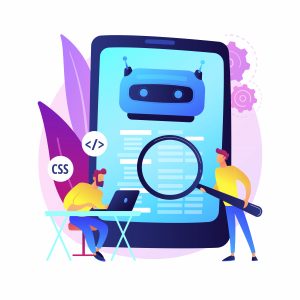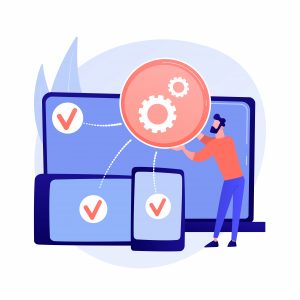Imagine this: Your team has developed a seemingly flawless software product. But as launch day nears, doubt creeps in: “Will users find it as intuitive as we do?”
Enter usability testing – the unsung hero of product development. It offers a clear window into real user interactions, transforming assumptions into certainty. By implementing it throughout your product’s lifecycle, you’ll catch issues early and track evolving user behavior.
In this guide, we’ll explore why usability testing is crucial for user-centric design and how to leverage it effectively. Ready to revolutionize your approach to software application development? Let’s dive in.
What is Usability Testing?
Usability testing is like a reality check for your digital product. It helps you understand how real people, not just your team, interact with your design. By watching users navigate through your product, you can identify any pain points, confusing elements, or areas that need improvement. This useful approach ensures that your product is interactive, easy to use, and meets the needs of your target audience.
Pros of Usability Testing
- Uncovers hidden issues: Usability testing can reveal problems that your development team might not have noticed, ensuring a smoother user experience.
- Improves user satisfaction: By addressing usability issues early on, you can create a product that is more intuitive and enjoyable to use, leading to higher user satisfaction.
- Saves time and money: Identifying and fixing usability problems early in the development process can prevent costly redesigns and delays.
- Provides valuable insights: Usability testing can offer insights into user behavior, preferences, and pain points, helping you make data-driven decisions about your product.
- Enhances product quality: By addressing usability issues, you can create a product that is more reliable, efficient, and user-friendly.
Cons of Usability Testing
- Time-consuming: Conducting usability testing can be time-consuming, especially if you need to recruit a large number of participants.
- Resource-intensive: This type of testing may require additional resources, such as dedicated testing facilities or specialized equipment.
- Subjective results: Usability testing can sometimes yield subjective results, as user experiences can vary.
- Limited scope: Usability testing may not uncover all potential issues, especially if the participants do not represent the entire target audience.
- Costly: Depending on the scale and complexity of your usability testing, it can be expensive.
Types of Usability Testing
For testing your website’s visibility, there is a plethora of methodologies and approaches that you can follow. Here are some of them:
- Unmoderated Remote Usability Testing
- In-person Usability Testing
- Eye Tracking
- Tree Testing
- Learnability
1. Unmoderated Remote Usability Testing
In unmoderated remote usability testing, participants complete tasks on their own devices, often using screen recording software to capture their interactions. This method is more cost-effective and flexible than in-person testing, as it allows for testing with a larger and more diverse group of participants.
Why it’s important: Unmoderated remote testing provides valuable insights into how real users interact with your website in their natural environment. It helps identify usability issues that may not be apparent in controlled laboratory settings.
2. In-Person Usability Testing
In-person usability testing involves observing participants as they interact with your website in a controlled laboratory setting. A moderator guides participants through tasks and observes their behavior, asking questions to gain deeper insights.
Why it’s important: In-person testing allows for more direct observation and interaction with participants, providing valuable qualitative data. It’s particularly useful for understanding complex user behaviors and for testing products that require physical interaction.
3. Eye Tracking
Eye tracking technology measures where participants look on a screen, providing insights into visual attention and engagement. This data can help identify areas of the website that are most and least appealing to users.
Why it’s important: Eye tracking can reveal hidden usability issues that users may not articulate verbally. It helps designers understand how users perceive and interact with visual elements on the website.
4. Tree Testing
Tree testing is a task-based usability testing method that evaluates the clarity and effectiveness of a website’s information architecture. Participants are presented with a hierarchical tree of menu options and asked to complete tasks based on the information provided.
Why it’s important: Tree testing helps you identify navigation issues and ensures that users can easily find the information they need on your website. It’s particularly useful for evaluating the effectiveness of your website’s information architecture.
5. Learnability
Learnability refers to how easy it is for users to learn how to use your website. It’s measured by observing how quickly users can complete tasks and how many errors they make.
Why it’s important: A website with high learnability is intuitive and easy to use, reducing user frustration and improving overall satisfaction. Learnability testing helps identify areas where users may struggle and ensures that your website is accessible to a wide range of users.
Usability Testing vs User Testing
Here is a comprehensive factor-wise comparison between usability testing and user testing:
| Factor | Usability Testing | User Testing |
| Definition | Evaluates how a product is to be used | Assesses if a product meets user needs and expectations |
| Primary Focus | Ease of use, user satisfaction | User behavior and user experience |
| Timing | Conducted later in development | Can be done at any stage, often earlier |
| Participants | Representative users of the target audience | Actual or potential users of the product |
| Key Metrics | Task success rate, time on task, error rate | User satisfaction, likelihood to use/recommend, feature preferences |
| Data Collected | Primarily quantitative | Both quantitative and qualitative (feedback, opinions) |
| Duration | Shorter sessions | Longer Studies (sometimes days and weeks) |
Summary
In order to help you understand how users in real-life scenarios use a software product, usability testing is of utmost importance. Avoid common mistakes and use the particular usability testing approach that best suits your product.




